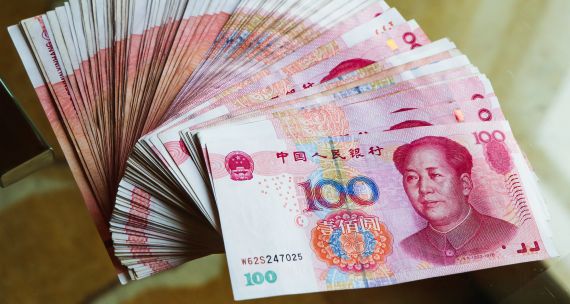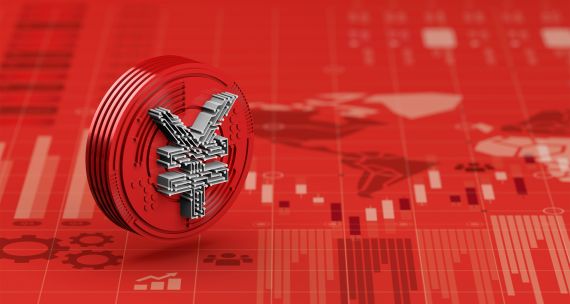This week’s meltdown in China has generated understandable concern. The world’s second-largest economy faces significant market turmoil: Should we be concerned? Yes. Should we panic? No, although there is a risk that panicky behaviour could spread to markets outside China.
China’s volatile stock market is not a proxy for its economy; in fact, there is considerable discrepancy between economic and stock-market performance. While China maintained strong and steady growth over the past 10 years, from a high of 14.2-per-cent annual GDP growth in 2007 to stable, high, single-digit growth in the past five years (7.4 per cent in 2014 and 6.8 per cent in 2015), according to the International Monetary Fund, the Shanghai composite index has fluctuated wildly, reaching a peak of 6,092 in 2007 only to fall back to the 2,000-to-3,000 range for much of the period betweeen 2010 and 2014, with another spike last June. From its 2015 peak of 5,178 on June 12, the market lost 40 per cent of its value in 15 days.
Playing the stock market in China is not an investment strategy; it’s a sport. Brokerages have banks of chairs set up so clients can come and stare at the rise and fall of their stocks in real time. The mood in the room resembles that of a bookie’s office more than an investment brokerage, and indeed, that is what the Chinese stock market represents for most of its participants – a place to gamble with “mad money,” a business casino licensed and sanctioned by the government. (Casinos are not legally allowed to operate in mainland China.) China’s stock market does not perform the role that markets play in Western countries, as vehicles for raising and allocating capital. In China, it is largely about speculation and gambling by individuals. The real wealth of most Chinese is locked up in the property market, an issue that does bear scrutiny.
There is no question that China’s economic fundamentals leave a lot to be desired. For years, American lawyer Gordon Chang has been dining out on his book, The Coming Collapse of China, which predicted that China would collapse within 10 years. Among the many shortcomings he identified, Mr. Chang highlighted failing state enterprises, insolvent banks, corruption, environmental degradation and a decline in foreign investment. First published in 2001, it was updated in 2012, when Mr. Chang famously declared that although his predictions of collapse had not come true, it was just a question of time. We are still waiting, even as many of the ills that he documented 15 years ago still exist, in spades.
China’s leadership is not insensitive to the challenges it faces on the economic – and thus political – front. It has talked a lot about reforms and opening the economy, which would allow at least some state-owned enterprises more freedom to operate on market principles, relax controls on the renminbi, rein in borrowing by local governments (much of which has gone to fuel competitive real-estate speculation), allow the banks to make loan decisions based on business rather than political criteria, and open closed sectors of the economy to more foreign participation. The new Five-Year Plan, which is to be approved in March, lays much emphasis on economic reform. Yet, there has been more talk than action.
Despite the general direction toward economic reform, much of the Chinese economy remains in the hands of central planners. What’s happening in Shanghai is a good example of authorities’ inability to resist meddling. First, they talked up the stock market and expanded its base by allowing risky margin lending, and then, when the rout began, they leaned on state-owned banks to buy up stocks and used strong-arm methods to prevent large players from selling. These market intervention measures, driven by the political imperative of keeping the lid on popular discontent, had a temporary stabilizing effect. But those chickens have now come home to roost with the latest plummet in valuations, exacerbated by the imposition of the ill-considered “circuit breaker,” now apparently scrapped. It would appear that the authorities may be learning the lesson that in the end, markets have to find their own level. In the long run, the Shanghai Composite will be healthier as a result of a good market purge. Meanwhile, China faces other challenges: a devaluing currency, an outflow of capital, a debt overhang and an overbuilt housing market.
Does China have the resiliency, resources and stability to weather these rough waters? The best and most likely answer is yes.
Chinese economic management has been pretty good at “muddling through.” While the economy still needs greater opening in order to bring about the reforms needed for China to achieve its goal of doubling GDP and incomes by 2020 through increased domestic consumption, innovation and a shift to service industries, the bureaucracy still retains a number of direct levers over the economy. These will be employed to stabilize the situation, although clumsy application, as occurred with the stock market, is still a risk.
We can expect that China will continue to grow, albeit more modestly. It’s shifting the focus of its imports from raw materials to services and higher-value-added products, and it will gradually absorb the excessive inventory of housing. Its banks, some of the world’s largest, will not fail. The Shanghai Composite will eventually stabilize at realistic levels (until the speculative roller-coaster ride starts again). Stock markets in the West will price in the China risk. And things will settle down – until it starts all over again.
This piece first appeared in The Globe and Mail on January 9, 2016



